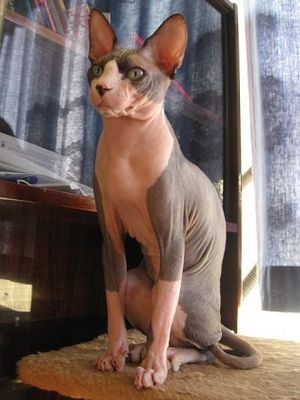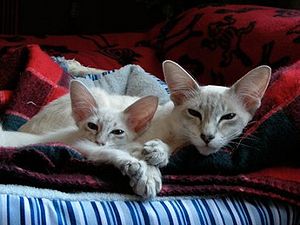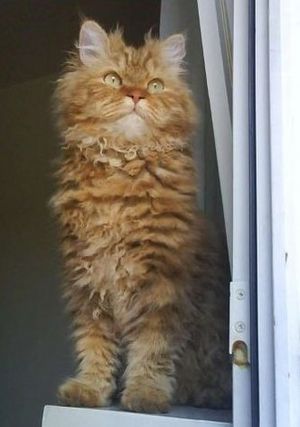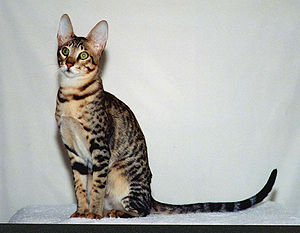 |
| Vital Statistics: |
| Place of Origin: Canada |
| Coat Type: hairless, soft down on face, ears, paws, tail & back |
| Color: all colors of cats |
| Temperament: affectionate, curious, loves people, good with dogs & other cats |
- Where does the Sphynx come from?
The unusual Sphynx first appeared as a hairless kitten in a litter of normal short haired cats in Canada in 1966. There was a similar mutation in Mexico in the late 19th century, but was only bred for a short time and disappeared. However it wasn’t until 1967 that a breeding program began in Europe. The Sphynx as it is today was first shown in Madison Square Garden at a cat show in the 1980s.
- What does the Sphynx look like?
The body of the Sphynx is long and strong with a long tapering tail. The legs are also long and slim with small round paws. The head is triangular in shape with a short nose. Eyes are almond shaped and ears are very large and pointed. While it appears completely hairless, the Sphynx actually has soft down on the face, ears, paws, tail and back. The skin is wrinkled. Coat colors are all those of cats.
- Does the Sphynx make a good pet?
The Sphynx is an affectionate, curious cat. It is very sociable, but likes peace and quiet as well. It does not like to be held tightly. It should be kept indoors as it does not have a fur coat to protect it from the elements. It will get along with dogs and other cats but much prefers human company.
- Where can I adopt a Sphynx?
Although the Sphynx is still a rare breed there may be some found in rescue organizations.
www.purebredcatbreedrescue.org/sphynx
Possible Health Issues
Hypertrophic cardiomyopathy, skin conditions, periodontal disease.



